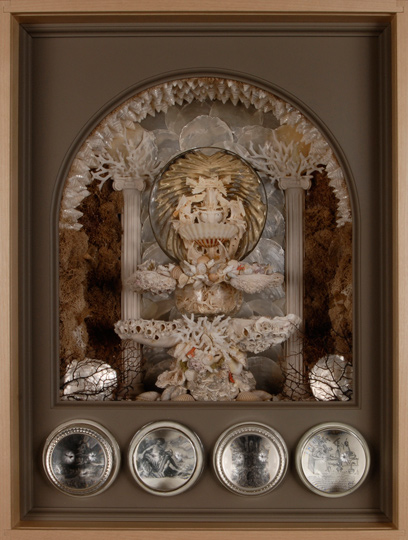The wildly encrusted sweetmeat dish seen in the display case brought to the polite dinner table a subterranean aesthetic that had long been reserved for secret caves and intimate bowers. Beginning in the Renaissance, grottoes functioned like fully naturalistic cabinets of curiosities. These outdoor rooms and the furniture within them were ornamented with stones, shells, and leaves as an imaginative re-creation of the abodes of mythological gods and goddesses. Grottoes were the sites of wild costume parties and illicit sexual encounters that offered polite society a fantastical escape from the rational world.


